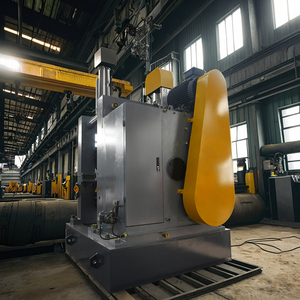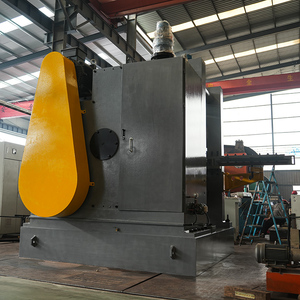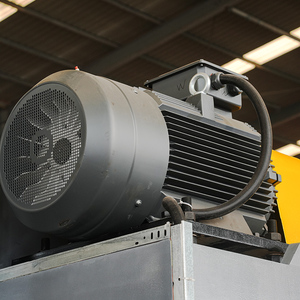
All categories
Featured selections
Trade Assurance
Buyer Central
Help Center
Get the app
Become a supplier

(19015 products available)

























Spring forming machines are mainly divided into two categories: CNC spring forming machines and cam-based spring forming machines. Each type of machine has its own unique advantages and is suitable for different spring production needs.
CNC (Computer Numerical Control) spring forming machines are automated machines controlled by a computer. They are designed to produce springs with high precision. The CNC spring forming machine uses a servo motor to control the movement of the forming tools, achieving accurate and consistent spring shapes and dimensions. CNC spring forming machines are flexible and can produce various types of springs by adjusting the programming and tooling setup. Manufacturers can use CAD (Computer-Aided Design) software to create spring designs and then import the designs into the CNC machine for production. This makes CNC spring forming machines suitable for custom or high-precision spring manufacturing.
Cam-based spring forming machines rely on a cam mechanism to control the movement of the forming tools. The shape of the cam determines the shape of the spring being formed. Cam-based spring forming machines are generally more cost-effective than CNC machines. They are also easier to operate and require less maintenance. Cam-based spring forming machines are suitable for mass production of standard or simple springs. These machines can produce springs quickly and efficiently. Although they may not offer the same level of precision as CNC machines, cam-based spring forming machines are sufficient for many common spring manufacturing needs.
The following specifications are essential for spring forming machines:
Maintaining coil spring forming machines is crucial to their performance and longevity. Regular maintenance helps prevent premature breakdowns and ensures that the machine operates at its best. Here are some maintenance tips:
Spring forming machines are used in various industries and applications.
Manufacturing vehicles and engines requires spring forming machines to make springs for valves, clutches, piston rings, and other components. These springs need to meet the specific performance requirements of the automotive industry and ensure the normal operation and performance of vehicles.
Many electronic devices use springs as components, such as connectors, switches, battery contacts, etc. Manufacturers use spring forming machines to produce springs that meet the size, conductivity, and durability requirements of electronic devices, thereby ensuring the stable performance of electronic products.
Household appliances and furniture may also use springs, such as sofa springs, mattress springs, and valve springs in household appliances. Manufacturers need to use spring forming machines to produce springs that meet the specific requirements of different appliances and furniture, ensuring the comfort, safety, and durability of the products.
Many medical devices use springs, such as implantable devices, surgical instruments, and diagnostic equipment. The springs used in medical equipment must meet strict sanitary standards and precision requirements. Manufacturers use spring forming machines to produce precise and clean springs for various medical devices.
The construction and machinery industry often uses springs in equipment, such as heavy machinery, agricultural machinery, and construction equipment. These springs need to withstand heavy loads, harsh environments, and long-term use without failure. Manufacturers use spring forming machines to create strong and durable springs that meet the specific needs of construction and machinery.
In addition to these specific industries, spring forming machines are also used in custom projects, research and development, and small-scale production. Some companies may need to design and produce special springs for unique applications. The versatility and flexibility of spring forming machines can meet the specific requirements of such customized projects and innovative research and development.
When considering investing in spring forming machines for sale, it is important to analyze the specific needs of the market. Different industries and applications require different types of spring forming machines. Therefore, it is important to understand the types of spring forming machines and their specific applications. Analyze the precise needs of the target customers in terms of the type and specifications of the spring forming machine required. When selecting a spring forming machine, it is important to ensure that the machine is manufactured by a well-known and reputable brand. This ensures the quality and performance of the machines, which is crucial for end-users. Look for suppliers who have a wide range of spring forming machines to choose from. This allows one to cater to the diverse needs of different customers.
Consider suppliers who offer customization services, as some customers may require specific customization to meet their unique requirements. When choosing a supplier, it is important to pay attention to the supplier's customer service and support. Choose a supplier who is responsive and provides timely support to ensure a smooth buying process. Additionally, it is important to analyze and compare the pricing of different suppliers to ensure a competitive resale price and a good profit margin. Consider suppliers who offer comprehensive after-sales support, such as technical assistance, training, and spare parts availability. This ensures long-term customer satisfaction and repeat business. When choosing a spring forming machine supplier, it is important to verify their credentials and reputation. Look for suppliers who have a proven track record of providing quality products and services. Additionally, consider the supplier's location and delivery capabilities to ensure timely and efficient delivery of the machines.
Q1. What is the difference between a wire forming machine and a spring forming machine?
A1. The main difference between the two machines is that a wire forming machine is used to create a variety of shapes and parts from a straight wire, while a spring forming machine is used to make springs from a coil. The wire forming machine can make anything from clips to rings, while the spring forming machine can only make springs.
Q2. Are there different types of spring forming machines?
A2. Yes, there are several types of spring forming machines available. The most common types are the CNC spring forming machine and the automatic spring forming machine. The CNC forming machine is controlled by a computer and can produce more intricate springs. An automatic spring forming machine is usually used for high-volume production. It is a more affordable option and can be adjusted easily to change the spring size.
Q3. Do spring forming machines require special training to operate?
A3. Yes, spring forming machines require special training to operate. This is because they are complex machines with many moving parts. It is important that the person operating the machine knows how to change the settings and use the machine properly to avoid any accidents.
Q4. Can a spring forming machine be used to make other types of wire forms besides springs?
A4. No, a spring forming machine cannot be used to make other types of wire forms because it is specifically designed to make springs. However, a spring forming machine can be used to make other types of springs, such as compression springs, extension springs, or torsion springs.